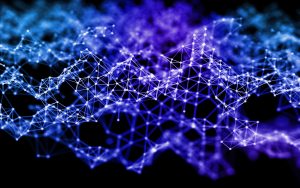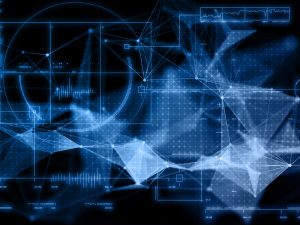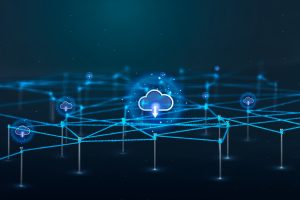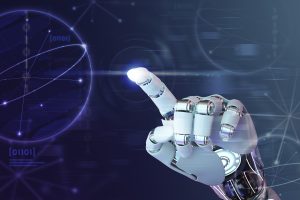It’s no secret that artificial intelligence (AI) and machine learning (ML) are rapidly evolving before our eyes. However, the complex technology operating behind the scenes is still somewhat unfamiliar to many.
Enter active learning, zero-shot learning, and few-shot learning. These three methodologies are among the innovative strategies that have become pivotal in enhancing data efficiency and model performance for leading businesses worldwide. Standing at the forefront of modern AI and reshaping this exciting field in real-time, they’re enabling models to learn much more effectively. And, crucially, they can do so using more limited data too; something that’s important to note considering experts warn we could run out of high-quality language data before 2026.
Excitingly, these methodologies are already optimizing our limited resources, addressing complex tasks, and expanding AI applications across various domains.
However, the real question is: where do you start?
Throughout this article, we’ll provide a comprehensive comparison of the three techniques, designed to empower you with valuable, actionable insights so your business can start making efficiencies with AI – now and for many years to come.
First things first, though, what’s the difference between these three machine-learning techniques?
Active Learning: Enhancing Efficiency with Strategic Data Labeling
Simply speaking, Active learning is a technique that prioritizes labeling the most informative examples from an unlabeled dataset. This reduces otherwise lengthy annotation efforts and vastly improves efficiency. Consequently, by employing an active learner to query an unlabeled pool, this iterative process identifies unlabeled samples that maximize the model’s improvement.
Active learning techniques are increasingly being integrated into AI data services to optimize data labeling and model training processes.
A Summary of the Key Benefits of Active Learning
- Reduced Labeling Costs – By focusing on the most informative images and samples, active learning significantly minimizes the volume of data requiring annotation. This ensures resources are used efficiently without sacrificing accuracy.
- Improved Efficiency – It also enables far more accurate predictions with fewer training labels. This reduces annotation bottlenecks by prioritizing ambiguous or challenging textual data. Crucially, this allows models to refine performance in the areas that matter most.
Real-world Applications in AI Data Services
- Image Recognition – Vision-focused deep learning models can now quickly and efficiently classify specific features from images. Specific deep learning techniques such as Convolutional Neural Networks (CNNs) have become powerful tools for image classification, object detection, and semantic segmentation.
- Natural Language Processing – This provides a reduced annotation bottleneck for the analysis of textual descriptions and other time-consuming tasks.
- Binary Classification – Finally, businesses are now radically narrowing the classification boundary using active learning approaches like this. For example, binary classification is often used to predict whether a customer will buy a product or not – and much earlier in the funnel.
Specifically in the marketing industry, active learning can hyper-personalize campaigns by analyzing customer behavior. However, for all use cases, active learning models can ensure accurate predictions in tasks needing minimal human intervention. Furthermore, by employing an acquisition function, active learning systems facilitate the active learning process and can achieve near-perfect expectations.
However, when it comes to AI efficiency, this is simply the start of what you can do
Active Learning: Smarter Data Utilization
Active learning empowers businesses to focus resources where they matter most. At EC Innovations, our teams leverage this technique to:
- Streamline Data Labeling – We use this methodology to identify the most valuable data for annotation, reducing costs and improving outcomes.
- Boost Model Accuracy – Our teams are also refining AI systems by concentrating on ambiguous or edge-case scenarios.
- Facilitate Continuous Improvement – Finally, it’s enabling us to make iterative updates to AI models, ensuring they stay relevant and effective.
Zero-Shot Learning: Generalization Without Extensive Data
Excitingly, Zero-shot learning (ZSL) enables models to classify unseen classes for tasks like image classification, object detection, and text classification. It does so by leveraging semantic representations; anything from class labels and class attributes to specific class properties. However, unlike traditional methods, ZSL bypasses the need for a pre-defined labeled dataset, enabling it to generalize unseen tasks with minimal training data.
A Summary of the Key Benefits of Zero-shot Learning (ZSL)
- Generalization Capabilities – The major upside is that zero-shot learning enables AI to understand and perform tasks it hasn’t been explicitly trained for.
- Expand Capabilities – It means you can quickly adapt to new tasks, languages, or applications, without relying on extensive datasets or retraining.
- Accelerate Time-to-Market – Consequently, you can drastically reduce lengthy development cycles. Instead, leveraging pre-trained models that are capable of context-aware decision-making.
- Enhance Cost Efficiency – You’ll also minimize the expense of acquiring and labeling large amounts of training data. This is so important when the market for AI training data is expected to grow from roughly $2.5 billion to $30 billion within a decade – with a price tag that some argue only ‘big tech’ can afford.
- Drive Scalability – Finally, this innovative methodology allows you to seamlessly manage complex, multilingual, or niche challenges across global markets. And this helps you unlock whole new worlds of potential audiences.
Real-world Applications in AI Data Services
- Image Retrieval – Zero-shot learning employs canonical correlation analysis to provide accurate predictions in specialized domains. A simple example would be a model identifying and learning “stripes” from images of tigers and zebras or “flying animals” from images of birds.
- Text Classification – This tool can also leverage semantic space and cosine similarity to identify patterns in textual data. It could then go on to facilitate real-time adjustments to inventory descriptions, and product recommendations in an e-commerce setting.
While this all sounds promising, some practical challenges must be identified before applying zero-shot learning. Despite its promise, ZSL relies heavily on the quality of semantic features such as class attributes. Consequently, poorly defined semantics will limit the model’s effectiveness – especially in highly nuanced tasks. Today, ZSL enables cutting-edge robotics to generalize across diverse tasks without constant reprogramming.
But can zero-shot learning work in more novel scenarios?
The short answer is: yes. ZSL has the ability to adapt to unseen tasks by leveraging pre-learned relationships in semantic spaces. However, its success will depend on the strength of the underlying model architecture, so be sure to work with experts in the space.
Zero-Shot Learning: Unlock Limitless Possibilities
The major upside of Zero-shot learning is that it allows AI models to perform new tasks without direct training. So that’s why EC Innovations uses this innovative approach to:
- Expand Multilingual Capabilities – We can provide seamless translation and content adaptation for underserved languages and markets.
- Enhance Customer Support – It helps us develop AI systems capable of addressing novel queries with minimal setup.
- Drive Innovation – Importantly, ZSL helps us empower businesses to explore new opportunities without the need for extensive data collection.
Above all else, ZSL is particularly beneficial in scenarios with limited resources; here it can address the critical challenge of model optimization techniques without compromising performance. So whatever your circumstances, we can find a solution that works for you.
Few-Shot Learning: Rapid Adaptation with Minimal Data
Finally, this innovative subfield of machine learning is excelling in scenarios that adapt to new tasks with minimal examples. By employing meta-learning algorithms and Prototypical Networks, FSL massively minimizes the need for extensive datasets. In order to give that some real-world context, a computer vision model could learn to classify rare diseases such as COVID-19 by being trained on a small number of chest X-rays.
A Summary of the Key Benefits of Few-shot Learning (FSL)
- Rapid Adaptation – Models can quickly adapt to new tasks using few-shot prompting and minimal training. This can help businesses accelerate deployment for new business cases.
- Reduced Data Dependency – With fewer training samples, you can reduce the need for extensive data collection and annotation and make big business savings. For example, this radically lowers healthcare costs in critical fields like medical imaging.
- High levels of accuracy – In a study involving airline tweet classification, few-shot learning achieved an accuracy rate of 97% on the test set, demonstrating its high efficiency in learning using a small number of examples.
Real-world Applications in AI Data Services
- Image Segmentation – As we mentioned above, this methodology can be invaluable for processing medical images. This supports timely medical diagnosis, with the highest precision.
- Sentiment Analysis – It also uses few-shot classification techniques to quickly analyze customer feedback. This allows businesses to tackle multilingual or complex tasks effortlessly, supercharging their global strategies.
But what industries are benefiting the most from few-shot learning?
Promisingly for the healthcare sector, few-shot learning is already optimizing diagnostics with limited patient data. However, along with its invaluable applications for the medical industry, few-shot learning also excels in e-commerce and customer support; in these instances, it can tailor personalized customer interactions using minimal training data. And when 80% of consumers have long been known to buy from companies offering personalized experiences, there’s no doubt that this benefit can’t be overstated.
But as we all know, no two customers are ever exactly the same. So how does few-shot learning address generalization? It’s simple: FSL addresses the generalization error challenge by employing episodic training and innovative techniques like cosine distance. These methods can help vastly improve baseline performance in this area.
Few-Shot Learning: Achieve More with Less
For businesses that need rapid results with minimal data, few-shot learning is a game-changer. At EC Innovations, we apply apply this approach to:
- Optimize Training Efforts – Quickly adapt AI systems for niche markets or specialized tasks.
- Accelerate Deployment – Reduce time-to-market by training models with a limited number of examples.
- Enhance Customization – Tailor AI-powered tools for unique challenges across industries, from localization to product recommendations.
We know this all sounds good in principle, but the question remains: what’s the right approach for your business?
Comparative Analysis: Choosing the Right Approach
| Technique | Strengths | Limitations | Use Cases |
| Active Learning | Reduced cost of labeling, efficient | Relies on an unlabeled dataset | Image classification, NLP |
| Zero-Shot | High generalization capabilities | Limited by semantic features quality | Object recognition, text classification |
| Few-Shot | Quick adaptation with minimal data | Requires specialized meta-learning | Medical imaging, sentiment analysis |
Conclusion: Today’s uses and tomorrow’s trends in AI Learning techniques
Without question, the world of artificial intelligence is being revolutionized by the advancements in learning paradigms like active learning, few-shot learning, and zero-shot learning. That’s because these methods are finally addressing longstanding challenges in AI development, such as the dependency on vast amounts of labeled data and the limitations of rigid training models. Amazingly, these techniques are now enabling industries to achieve smarter, more adaptive, and cost-efficient solutions; something that’s more important in today’s climate than ever before.
Enhancing Precision and Efficiency
Right now active learning is transforming how data is curated and utilized, making AI training more precise and resource-efficient. Consequently, by identifying and labeling the most informative data points, businesses reduce the volume of labeled data they require – vital when scarcity sits on the horizon. This approach has found powerful applications in healthcare, where it accelerates the detection of rare diseases by training AI models on hard-to-classify medical images. In retail, it improves product categorization and enhances recommendation systems by refining edge-case scenarios. Similarly, autonomous vehicles benefit from safer AI systems trained on rare and challenging driving conditions – invaluable in ensuring better handling of real-world complexities.
Rapid Adaptation with Minimal Data
On the flip side, few-shot learning pushes the boundaries of AI adaptability, enabling models to generalize from just a handful of labeled examples. This capability is critical in industries where data collection is expensive or inherently limited. Financial services use it to enhance fraud detection, allowing systems to identify emerging patterns with minimal data. Elsewhere, e-commerce platforms leverage few-shot learning to deliver personalized experiences by optimizing recommendation engines – even with the most sparse user data. But that’s not all. The legal sector is now harnessing the power of this technique, streamlining processes such as contract analysis for unique or rare clauses. All of this makes AI tools more accessible to niche applications.
Unprecedented Levels of Versatility
Lastly, Zero-shot learning brings unparalleled versatility to today’s AI systems. By leveraging general knowledge from pre-trained models, zero-shot learning allows AI to perform tasks without requiring specific examples during training. This capability has profound implications for global scalability and innovation. In localization, ZSL facilitates seamless translation and content adaptation for underserved languages; it helps transcend boundaries, breaking down barriers in multilingual markets. Customer support systems powered by zero-shot learning can also handle novel queries effortlessly, enhancing the user experience for global audiences. Finally, in the marketing industry, ZSL is driving efficiency and helping to foster creativity. It does so by helping to create tailored content for diverse audiences, and without manually inputting every unique context.
Together, these AI learning techniques are shaping the future of technology across industries. They democratize AI development, allowing businesses with limited data resources to leverage powerful tools. By reducing dependency on massive datasets, they accelerate innovation and make AI applications more scalable across languages and domains. Moreover, these methods address ethical concerns by minimizing reliance on sensitive or hard-to-obtain data. As industries continue to adopt active learning, few-shot learning, and zero-shot learning, the possibilities for smarter, faster, and more efficient AI solutions are limitless, marking a significant leap forward on the path to technological advancement.
Uncharted Worlds of Potential
As we speak, active, zero-shot, and few-shot learning techniques are already revolutionizing AI by addressing the critical challenge of balancing efficiency and performance. Their integration into AI-powered tools unlocks potential applications across specialized domains and a new world of opportunities for tomorrow. However, in order to leverage these transformative methods, businesses must adopt a systematic approach to model development and process optimization.
Emerging research in active, zero-shot, and few-shot learning focuses on homogenous transfer learning, adversarial networks, and optimization tools; advances in feature space instances and dynamic nature modeling will soon drive operational efficiencies across industries – everything from supply chains, and real-time object tracking will be positively affected. EC Innovations believes these cutting-edge techniques can provide an exciting opportunity for everyone to grow and prosper, together. So join us and harness the power of AI for your business today.
Why EC Innovations?
With decades of expertise and a global presence, EC Innovations is uniquely positioned to integrate these advanced AI methodologies into your operations. Our tailored solutions empower businesses to achieve faster results, reduce costs, and expand their reach—all while staying ahead in today’s competitive landscape.





